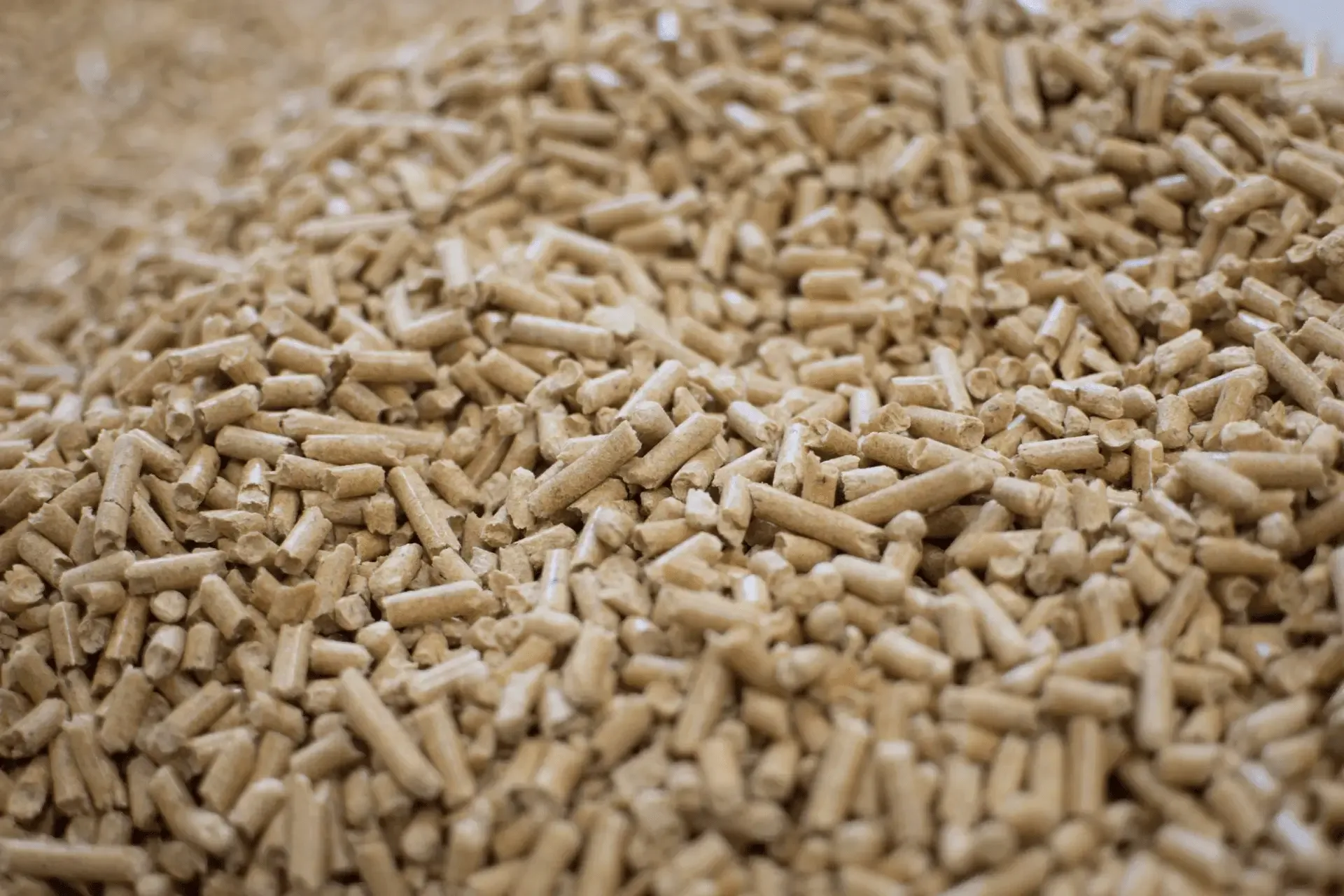What is wood pellet and how is it made?
Wood pellet is an eco-friendly solid fuel in the form of small cylindrical granules. It is mainly produced from wood waste such as sawdust, wood chips, or shavings, making it an environmentally friendly product that efficiently utilizes resources. Thanks to its high density and low moisture content, pellet has a good heating value and is widely used for heating.
Wood pellet production process
The production of pellets starts with the proper preparation of raw material. Wood waste is first dried and then shredded into fine particles. The next step involves pressing the material under high pressure in special dies, which gives the pellet its characteristic granule shape. This process does not require the use of chemical additives – lignin, naturally present in wood, acts as a natural binder. Finally, the finished pellet is cooled, screened, and packaged.
Types of Pellets – How to Choose the Right One?
Pellets available on the market differ mainly in quality, which is crucial for their efficiency and environmental impact. The main types of wood pellets are:
- Class A1 Wood Pellet – highest quality, produced from pure wood without bark. It has a low ash content and high heating value, making it ideal for domestic use.
- Class A2 Wood Pellet – contains more bark and impurities, lowering its quality. It is suitable for larger industrial installations.
Industrial Pellet – mainly intended for large boilers. Its production allows for a higher level of impurities, making it less efficient for domestic use.
How to choose the right pellet?
Before purchasing, it is worth checking quality certificates, ash content, and heating value. The selection of pellets should be suited to the type of heating system – home stoves work best with high-quality pellets.
Main advantages of wood pellets – why choose them?
Wood pellets are becoming an increasingly popular heating fuel, combining both ecological and economic benefits. Thanks to their properties, they are an attractive alternative to traditional energy sources like coal or gas.
Pellet – eco-friendly home heating
Pellets are made from wood waste, which reduces material wastage. During combustion, they emit significantly fewer harmful substances than fossil fuels, making them friendly to the environment and the health of household members.
Zero CO2 balance of pellet
Burning pellets does not increase the amount of carbon dioxide in the atmosphere because the CO2 emission during combustion equals the amount absorbed by the tree during growth. This balance makes pellets a climate-neutral energy source.
High efficiency of pellets
Pellets have a high heating value, meaning they can generate a large amount of heat with relatively low consumption. Additionally, their low moisture content and density increase combustion efficiency.
Convenience of pellet stove use
Modern pellet stoves offer automatic fuel feeding, making them easy to operate with minimal user intervention. Furthermore, pellets are available in convenient packaging that facilitates storage and dosing.
Pleasant Smell
During combustion, wood pellets produce a natural, subtle wood scent, which is much more pleasant than the smoke from coal or other fossil fuels. This is especially important for those who value the comfort and aesthetics of home heating.
Disadvantages of pellets – what to know before purchase?
While wood pellets offer many benefits, it’s important to be aware of potential difficulties when using them.
Special Heating Installation
Pellet stoves require a dedicated heating system, meaning an investment in new equipment or upgrading existing installations. This is an additional cost to consider when planning a purchase.
Uncertain Price
Pellet prices can fluctuate depending on the availability of raw materials and the energy market situation. During the heating season, demand rises significantly, often leading to price increases.
Availability
Pellets are gaining popularity, but their availability in some regions may be limited, especially during the winter season. Regular planning of purchases and supplies is crucial to avoid supply issues.
How to choose the right wood pellet?
Choosing the right wood pellet is crucial for heating efficiency and the longevity of the heating system. Before purchasing, pay attention to:
- Quality Certificates – Look for pellets with certifications like ENplus or DINplus, confirming their high quality and low ash content.
- Heating Value – Check technical parameters such as calorific value and moisture content. The best pellets have a heating value above 18 MJ/kg and moisture below 10%.
- Type of Wood – Pellets made from pure wood (without bark) ensure lower ash emission and higher efficiency. Pine pellets are particularly recommended for their heating properties.
- Reviews and Purchase Source – Buy pellets from trusted suppliers to avoid low-quality products. It’s also worth reading other users’ reviews, which can help in making a decision.
High-Quality pine pellets from ENVUN
ENVUN offers certified A1 class pine pellets, produced from clean pine sawdust without chemical additives. They have a high heating value of 18.25–19 MJ/kg, low ash content (0.30–0.35%), and moisture content of 5.50–7.00%. Thanks to these parameters, ENVUN pellets provide effective and eco-friendly heating. By choosing ENVUN products, you invest in quality and environmental care.



